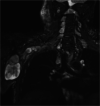Cancer of the Peripheral Nerve in Neurofibromatosis Type 1
- PMID: 28349408
- PMCID: PMC5398990
- DOI: 10.1007/s13311-017-0518-y
Cancer of the Peripheral Nerve in Neurofibromatosis Type 1
Abstract
The RASopathy neurofibromatosis 1 is an autosomal dominant hereditary cancer syndrome that represents a major risk for the development of malignancies, particularly malignant peripheral nerve sheath tumors (MPNSTs). MPNSTs are unique sarcomas that originate from the peripheral nerve and represent the only primary cancer of the peripheral nervous system. To date, surgery is the only treatment modality proven to have survival benefit for MPNSTs and even when maximal surgery is feasible, these tumors are rarely curable, despite the use of chemotherapy and radiation. In this review, we discuss the current state-of-the-art treatments for MPNSTs, latest therapeutic developments, and critical aspects of the underlying molecular and pathophysiology that appear promising for therapeutic developments in the future. In particular, we discuss the specific elements of cancer in the peripheral nerve and how that may impel development of unique therapies for this form of sarcoma.
Keywords: Chemoprevention; Malignant peripheral nerve sheath tumor; Malignant transformation; Neurofibromatosis; Sarcoma; Treatment.
Figures



References
-
- Carey JC, Baty BJ, Johnson JP, Morrison T, Skolnick M, Kivlin J. The genetic aspects of neurofibromatosis. Ann N Y Acad Sci. 1986;486:45–56. - PubMed
-
- NIH. National Institutes of Health Consensus Development Conference Statement: neurofibromatosis. Bethesda, Md., USA, July 13–15, 1987. Neurofibromatosis 1988; 1: 172-178. - PubMed
-
- Gutmann DH, Aylsworth A, Carey JC, et al. The diagnostic evaluation and multidisciplinary management of neurofibromatosis 1 and neurofibromatosis 2. JAMA. 1997;278:51–57. - PubMed
-
- Abramowicz A, Gos M. Neurofibromin in neurofibromatosis type 1—mutations in NF1gene as a cause of disease. Dev Period Med. 2014;18:297–306. - PubMed
Publication types
MeSH terms
Substances
Grants and funding
LinkOut - more resources
Full Text Sources
Other Literature Sources
Research Materials

